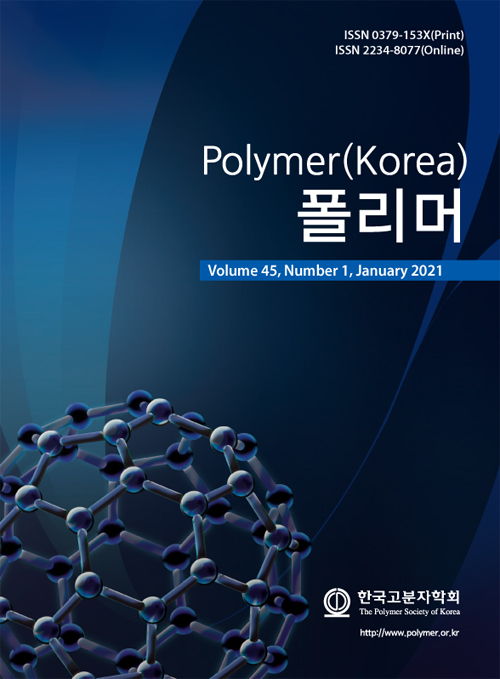- Formation Behavior of Organic Nano-lens Arrays for Highly Efficient Top-emitting Organic Light Emitting Diode Applications
Electronics and Telecommunications Research Institute (ETRI), 218 Gajeongro, Yuseong-Gu, Daejeon 34129, Korea
- 고효율 상부발광 올레드 응용을 위한 유기 나노렌즈의 형성 거동
한국전자통신연구원 ICT 창의연구소
Recently, an organic nano-lens array (NLA) technology has been developed to increase light extraction efficiencies of top-emitting organic light emitting diodes (OLEDs) without the deterioration of organic films. To achieve optically efficient OLEDs, the size of NLA must be at least several hundred nanometers, explaining the importance of the understanding of formation characteristics of NLA determined by vaporizer heating conditions. Herein, nano-lens generation occurs dominantly when heating temperature increases from 300 to 320oC. From 320 to 340oC, its growth is predominant, which is explained by Ostwald ripening and coalescence. Additionally, as the temperature and the dwell time at target temperature increase, the area ratio of nano-lens to substrate increases, which is attributed to the increase in the amount of vapor generated during heating. With NLA, optical simulations indicate that a large amount of light is extracted otherwise trapped inside OLEDs, indicating that NLA is an optically excellent light extraction structure.
최근 상부발광형 올레드 소자를 구성하는 유기 박막의 열화없이 광추출 효율을 개선할 수 있는 유기 나노렌즈 기술이 개발되었다. 광학적으로 우수한 올레드를 구현하기 위해서는 렌즈 크기가 적어도 수백 나노미터가 되어야 하며 렌즈 특성을 결정하는 핵심 실험변수인 기화기 가열조건에 따른 렌즈 형성 거동에 대한 이해가 필요하다. 본 연구에서 가열온도가 300에서 320oC로 증가하면 렌즈 생성, 320에서 340oC로 증가하면 렌즈 성장이 관찰되는데 이 때 Ostwald ripening과 렌즈 병합 현상이 발견된다. 가열온도와 그 유지시간이 증가함에 따라 렌즈가 차지하는 면적 비율이 증가하는데, 이는 기화기 가열 도중 유기증기의 생성량이 증가하기 때문이다. 광학 전산모사를 통해 나노렌즈가 적용된 올레드 소자는 소자 내에 갇힐 뻔한 많은 양의 빛들을 추출할 수 있음을 알 수 있는데, 이로부터 나노렌즈는 우수한 광추출 구조물임을 알 수 있다.
Keywords: organic nano-lens, top-emitting, organic light emitting diode
- Polymer(Korea) 폴리머
- Frequency : Bimonthly(odd)
ISSN 0379-153X(Print)
ISSN 2234-8077(Online)
Abbr. Polym. Korea - 2023 Impact Factor : 0.4
- Indexed in SCIE
 This Article
This Article
-
2021; 45(1): 129-133
Published online Jan 25, 2021
- 10.7317/pk.2021.45.1.129
- Received on Sep 7, 2020
- Revised on Sep 23, 2020
- Accepted on Sep 26, 2020
 Correspondence to
Correspondence to
- Young-Sam Park
-
Electronics and Telecommunications Research Institute (ETRI), 218 Gajeongro, Yuseong-Gu, Daejeon 34129, Korea
- E-mail: s_yspark@etri.re.kr










 Copyright(c) The Polymer Society of Korea. All right reserved.
Copyright(c) The Polymer Society of Korea. All right reserved.